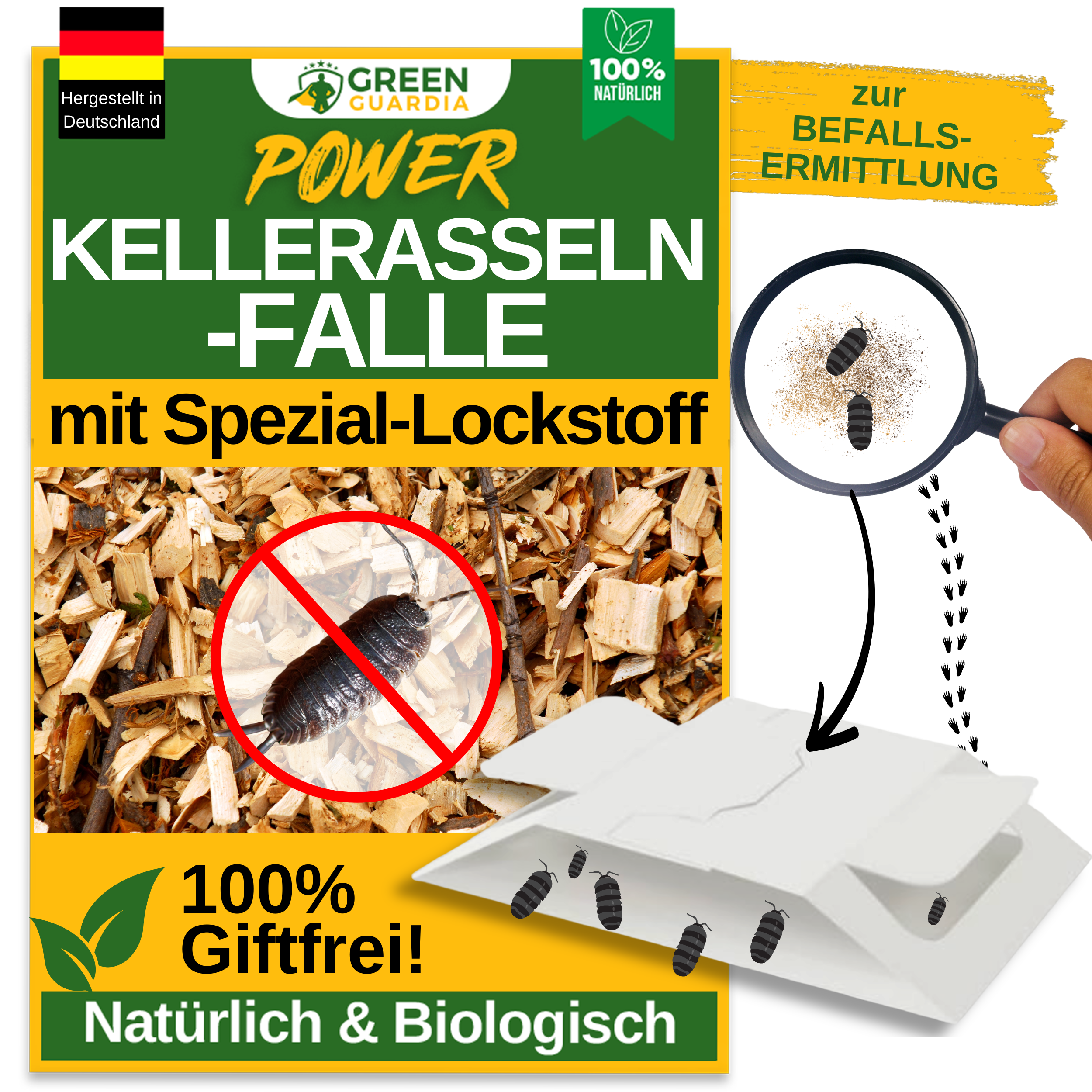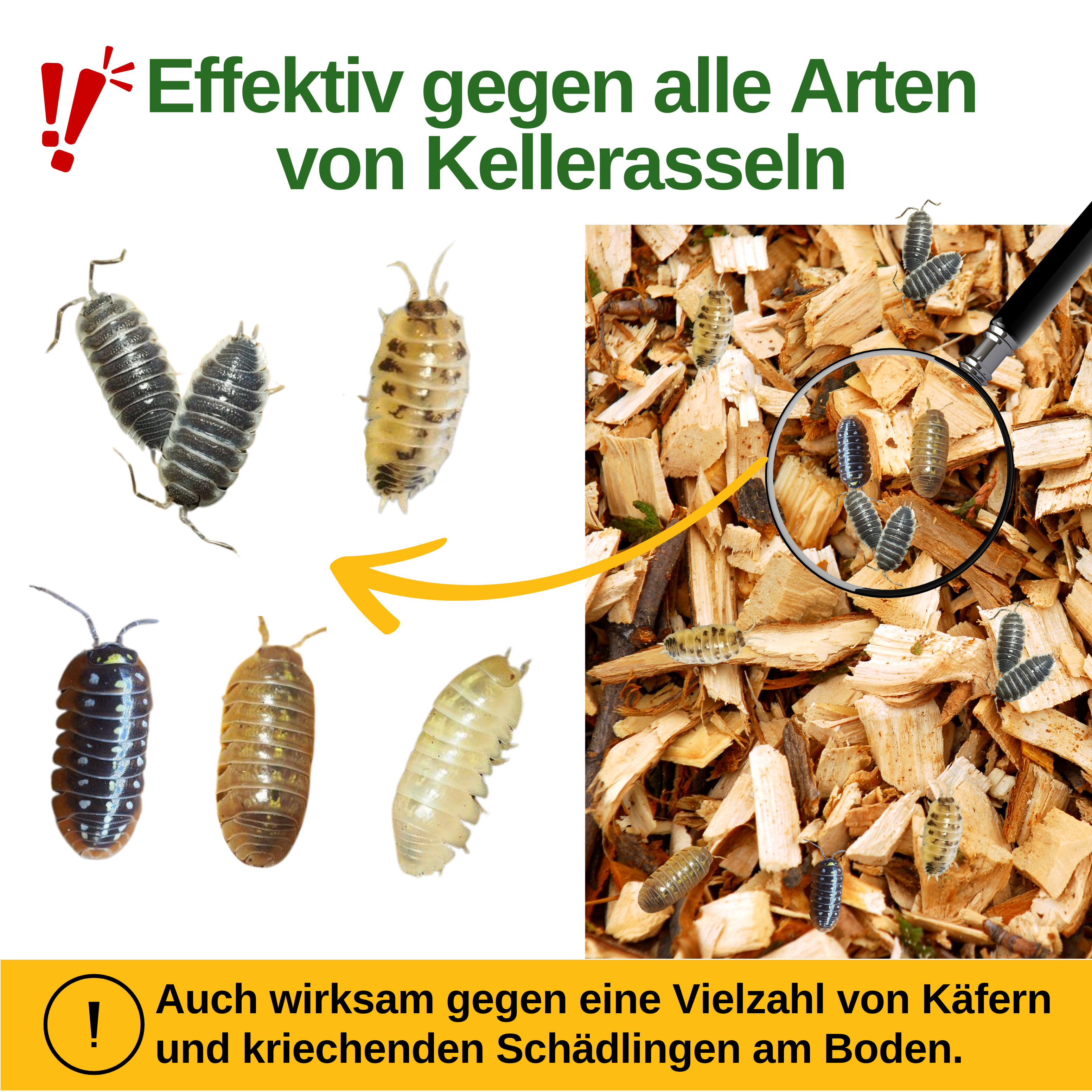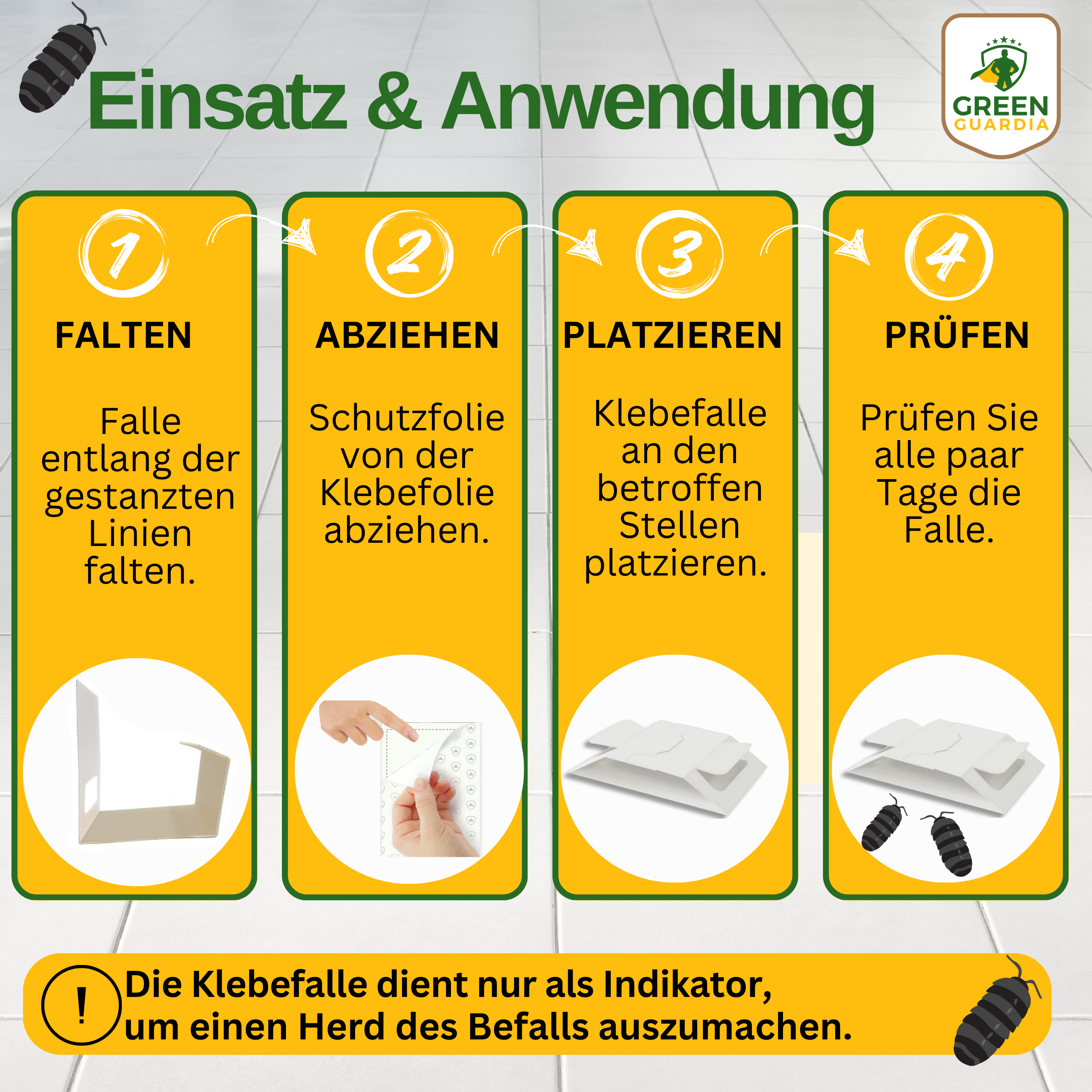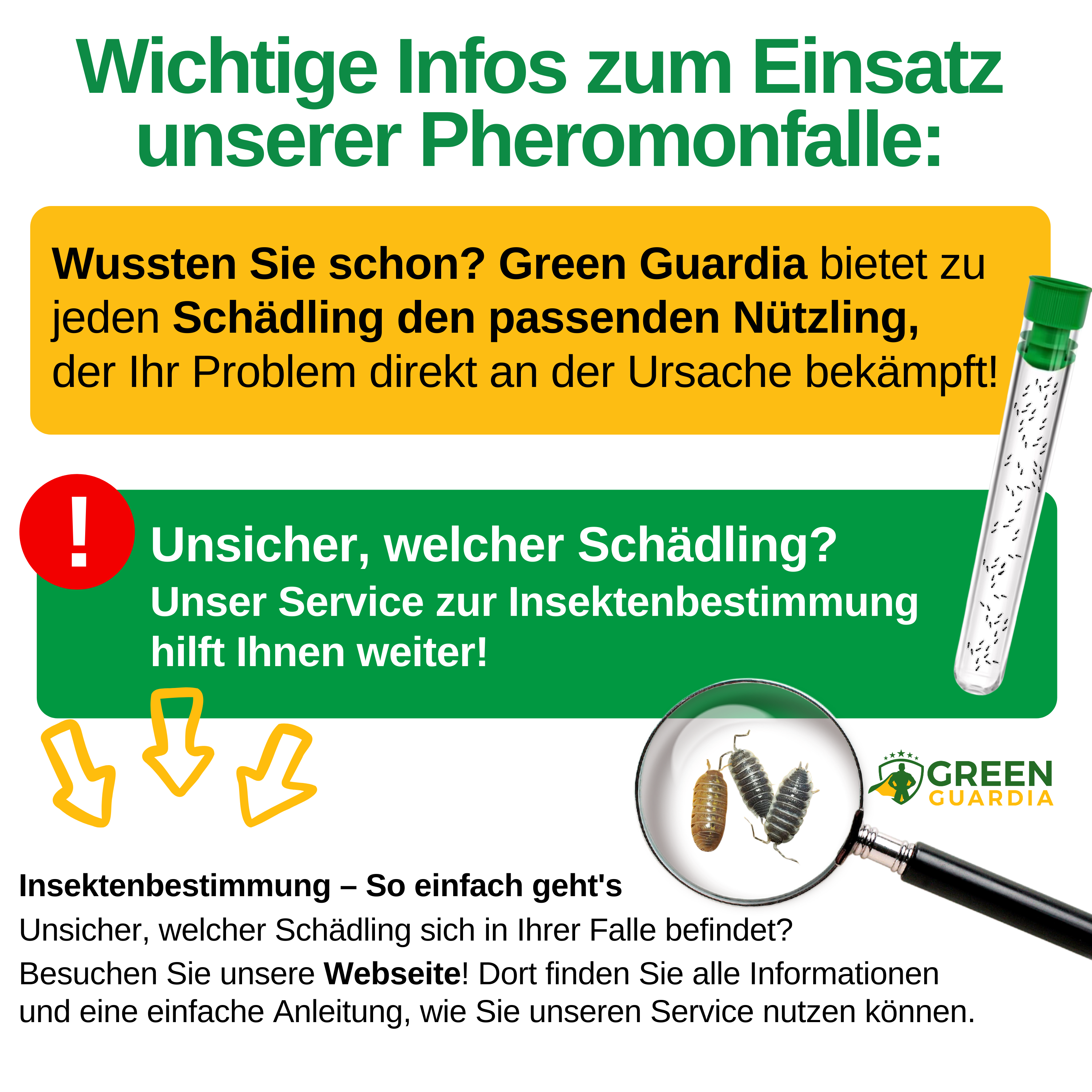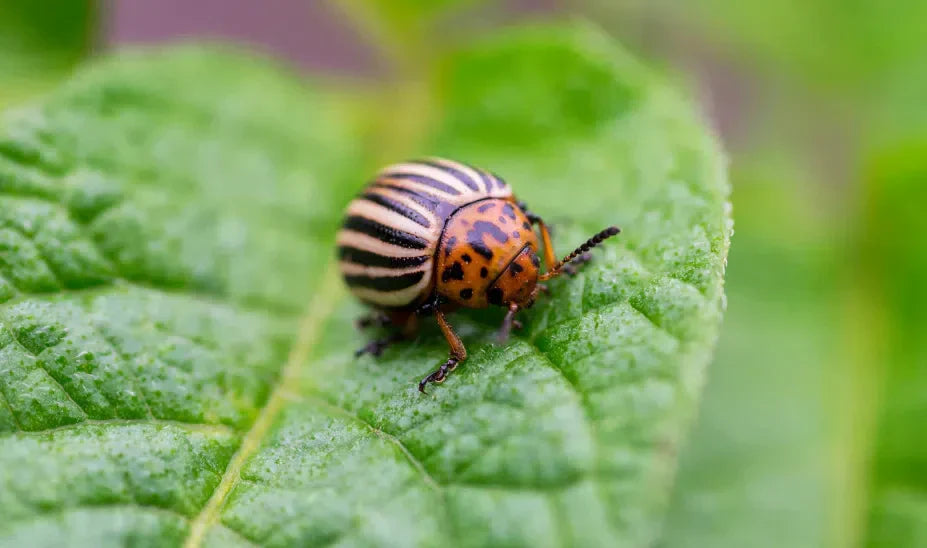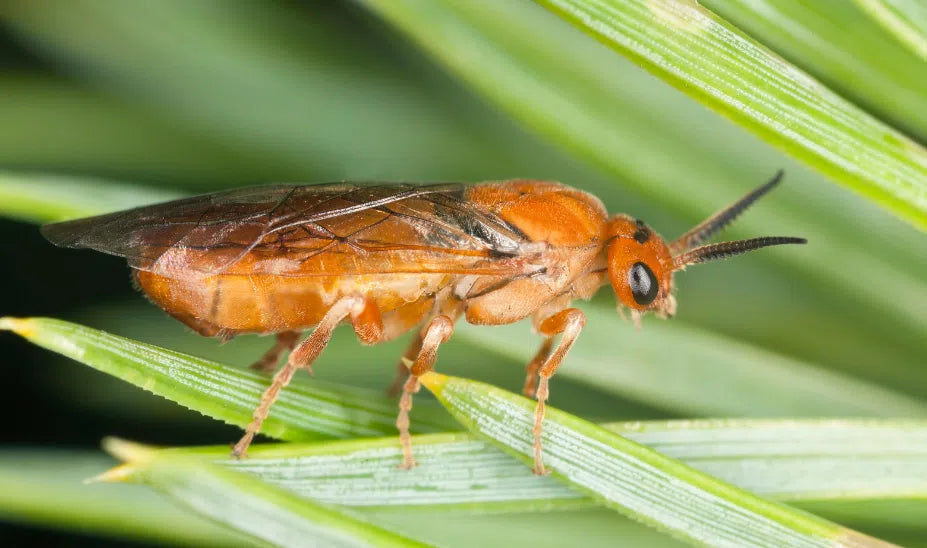Kellerasseln natürlich bekämpfen – Nachhaltig & effektiv
Kellerasseln (Porcellio scaber) mögen auf den ersten Blick harmlos erscheinen, doch in großer Zahl können sie zu einer echten Plage in Haus und Garten werden. Besonders in feuchten, dunklen Ecken fühlen sich diese kleinen Krebstiere wohl und vermehren sich schnell.
Mit den richtigen, umweltfreundlichen Maßnahmen können Sie Kellerasseln jedoch effektiv bekämpfen und langfristig fernhalten. In diesem Artikel erfahren Sie alles über die Lebensweise dieser Tiere und wie Sie sie mit natürlichen Methoden wie Raubmilben und Florfliegenlarven in den Griff bekommen.
Ein Überblick über den Schädling
Kellerasseln gehören zur Familie der Krebstiere und sind vor allem in feuchten Kellern, unter Steinen, in Garagen oder unter Pflanzenresten im Garten zu finden. Sie bevorzugen abgestorbenes Pflanzenmaterial, können bei starker Vermehrung aber auch junge Pflanzen beschädigen.
Die Tiere sind 12–15 mm lang, grau-braun gefärbt, haben einen ovalen Körper und sieben Beinpaare. Auch wenn sie keine klassischen Pflanzenschädlinge sind, sollten sie bei gehäuftem Auftreten nicht unterschätzt werden.
Woran Sie einen Befall erkennen
- Gehäuftes Auftreten in Kellern, unter Pflanztöpfen oder in Gartenecken
- Sichtbare Kellerasseln in Blumentöpfen, Kompostecken oder nach Regen
- Feuchtigkeit und organisches Material in der Nähe – ideale Brutstätten
Natürliche Methoden zur Bekämpfung
Eine der wirkungsvollsten Methoden ist der Einsatz von Nützlingen. Besonders zwei Arten haben sich bewährt:
- Raubmilben (Hypoaspis miles): Fressen die Eier und Jungtiere der Kellerasseln und sorgen für eine nachhaltige Reduktion der Population.
- Florfliegenlarven (Chrysoperla carnea): Diese „Alleskönner“ fressen nicht nur Kellerasseln, sondern auch andere Schädlinge – ideal bei starkem Befall.
Zusätzlich können Sie mit einfachen Maßnahmen die Lebensbedingungen für Kellerasseln verschlechtern:
- Feuchtes Laub, Holz und Pflanzenreste regelmäßig entfernen
- Für gute Belüftung in Kellerräumen sorgen
- Verstecke wie feuchte Mauerecken oder Bodenspalten trockenlegen
Vorbeugende Maßnahmen
- Feuchtigkeit reduzieren: Lüften Sie regelmäßig und vermeiden Sie stehende Nässe
- Garten aufräumen: Entfernen Sie Komposthaufen, Holzreste und nasses Laub in Pflanzenbereichen
- Kiesränder um Pflanzen: Erschweren Kellerasseln den Zugang
- Früherkennung: Kontrollieren Sie regelmäßig gefährdete Stellen
Produkte zur natürlichen Bekämpfung
In unserem Sortiment finden Sie bewährte Produkte zur biologischen Bekämpfung von Kellerasseln:
- Raubmilben (Hypoaspis miles): Nachhaltig, effektiv und unbedenklich für Mensch und Haustier
- Florfliegenlarven (Chrysoperla carnea): Universell einsetzbare Nützlinge zur schnellen Hilfe
- Mechanische Hilfsmittel: Zur Feuchtigkeitskontrolle und Entfernung von Verstecken
Unsere Produkte helfen Ihnen, das natürliche Gleichgewicht wiederherzustellen – ganz ohne Chemie.
Fazit: Umweltfreundlich gegen Kellerasseln
Kellerasseln müssen kein dauerhaftes Problem darstellen. Mit natürlichen Methoden wie dem gezielten Einsatz von Raubmilben und Florfliegenlarven sowie einfachen vorbeugenden Maßnahmen schaffen Sie ein unattraktives Umfeld für diese Schädlinge.
Handeln Sie jetzt und setzen Sie auf eine umweltfreundliche Schädlingskontrolle – für ein gesundes Zuhause und einen gepflegten Garten.


